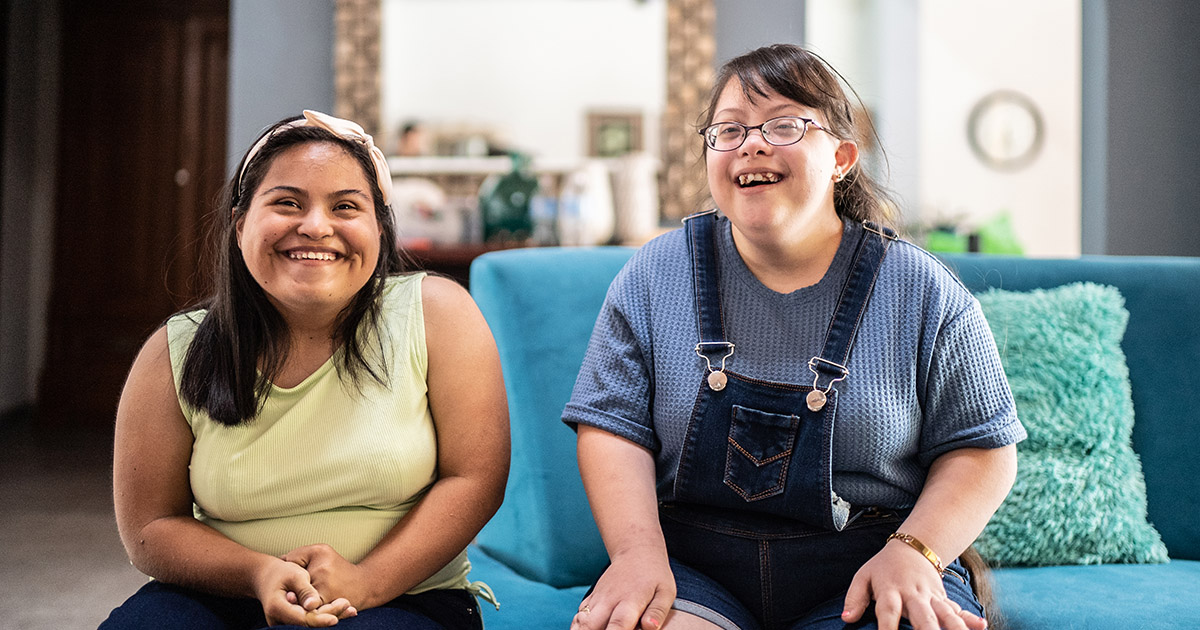Rethinking Guardianship and Supported Decision Making
By: Anita Raymond, Director, Volunteers of America MN Center for Excellence in Supported Decision Making / Care Management and Consultation Services
Do you know someone with a disability – either physical or intellectual/developmental – who needs some decision-making support? Have you been told to consider guardianship for the person? Would you like more information before you take that step?
Supported Decision Making (SDM) is an important option to help people get their needs met while balancing their wants and to help them live their best lives. It is also a legal alternative to court-appointed guardianship. In fact, Minnesota law requires that supported decision making, and other less restrictive alternatives, be tried before guardianship can be requested or appointed.
Supported Decision Making helps a person understand their situation, their options, the pros and cons of the options, the unintended consequences of their decisions and any other factors so they can make their decisions. Just because an individual needs help doesn’t mean they need a guardian – we all need help sometimes!
However, when comparing choice, independence and how decisions are made by people living with disabilities and those who don’t currently have a disability, double standards frequently arise. These double standards may be based on ageist and ableist ideas or well-intended notions about safety at the cost of happiness for people with disabilities. They also may lead to over-use of guardianship.
Supporting Informed Decisions
If I make a mistake or a risky decision, people are likely to explain it away: “We all make mistakes!” “You were having a bad day!” But when a person with a disability does the same thing? Too often, it is used as evidence of incapacity and possible need for a guardian, “for the person’s own good”. Instead of these assumptions and labels, what if we instead sit down with the person to discuss what happened? Ask questions like: How did this mistake happen? How do you feel about it? What was your mindset at the time? Then, you can learn together why it was dangerous, what could’ve have been done differently and how it could be avoided in the future.
Prioritizing Independence
When people with disabilities don’t fully understand the complexities of Medical Assistance/Waiver programs, a medical diagnosis, how to navigate prescriptions refills or make medical appointments, or find housing options, they are described as not being independent, not able to make their own decisions and maybe even in need of a guardian.
Empowering Your Loved One
Personally, when I am not sure what decision to make about something, I might do an internet search to see how others have navigated it. I might talk to my friends and family and ask them what they would do in my situation. Or, I might turn to someone who knows more about the technical aspects of the issue than I do. But when people with disabilities need help from others to better understand a situation, they might be viewed as incapacitated and in need of a guardian. This is where SDM comes in.
Supported Decision Making
Supported Decision Making is a new idea to some. To others, it’s how they’ve always thought about helping loved ones navigate life, without realizing it has a fancy name. SDM is often described as “a recognized alternative to guardianship where people with disabilities use trusted friends, family members, and professionals to help them understand the situations and choices they face, so they may make their own decisions without the ‘need’ for a guardian.” There is no one way to support a person in their decision making. Rather, Supported Decision Making is, “a series of relationships, practices, arrangements and agreements of more or less formality and intensity, designed to assist an individual with a disability to make – and communicate to others – decisions about their life.” Supporters might be family, friends, providers or staff: anyone who can help the person understand their situation, so they can make the decision, without the supporters imposing their own choices or values on the person.
Decision-making support can be as simple as asking a trusted friend to help you decide whether to take a COVID-19 test or go to a concert on a day you’re not feeling well. Alternatively, it can involve more formal measures, such as designating an individual as a supporter through a written Supported Decision-Making Agreement (SDMA).
Here’s an example: A case manager (let’s call her Carrie) is talking with a person with significant disabilities (let’s call him Miles) who expresses an intention to get his driver’s license. Rather than just determining that this would be too dangerous and seeking ways to prevent this, maybe Carrie and Miles would spend some time talking about his desire. Why is this important to Miles? Maybe it’s not about driving at all, but rather he’s frustrated that he can’t spontaneously go to his friend’s house or shopping because he must always ask others to schedule a ride. Maybe he wants a job and needs more flexible transportation. Or, he just watched a movie about two buddies on a road trip that he’d like to recreate. Once he and Carrie figure out what’s important to him about the decision, they can determine realistic ways of responding to the desire.
It’s the same with any decision.
Another example: A person is refusing to take their medicine. Maybe they don’t like how it makes them feel or they need someone to explain in plain language why it’s important to their health. Or maybe the way a staff person is presenting the medication to them is the problem. Often, when a person can understand why something is important for them, they can and will make decisions that balance choice and happiness as well as health and safety.
Supported Decision Making is just that: supporting a person to understand the impact of their choices on their life. It is anything we do – big or small, formal or informal – to help a person make decisions. It is about supporters making decisions with the person, not for the person. It is a newer way of thinking about how we all sometimes need help to understand a situation and choices and that just because a person can’t understand something or can’t make a decision completely independently, doesn’t mean they can’t make the decision. It just means they need a little help. And a little help is something we all need, whether we have a disability or not!
To discuss how Supported Decision Making or guardianship might be applicable in your situation, contact the Guardianship Information Line at cesdm@voamn.org or call (952) 945-4174 (toll free: (844) 333-1748). Learn more about Supported Decision Making in Minnesota at the Center for Excellence in Supported Decision Making (Resources Tab).
More Information and Support
To discuss SDM along with any other issues your family may be struggling with in providing support and future planning, you can sign up for a free consultation with LBSA’s Family Navigation Services and learn more about how we help individuals and families dealing with an intellectual or developmental disability reach their goals and support each other when making tough decisions.
About the Author
Anita Raymond is a Licensed Independent Social Worker and Director at Volunteers of America MN’s Center for Excellence in Supported Decision Making / Care Management and Consultation Services. You can reach Anita at (952) 945-4172 or araymond@voamn.org.
_________________________________________
- Blank, Peter and Martinis, Jonathan (2015)
- Dinnerstein, Robert (2012)
- A written document or an official written or verbal designation of a supporter is not required in Minnesota law, but some people feel more comfortable doing that, and some providers feel more comfortable talking to supporters if that relationship is formalized in a document. For examples of SDMAs, visit the National Resource Center on Supported Decision Making: Supported Decision-Making Model Agreements.

